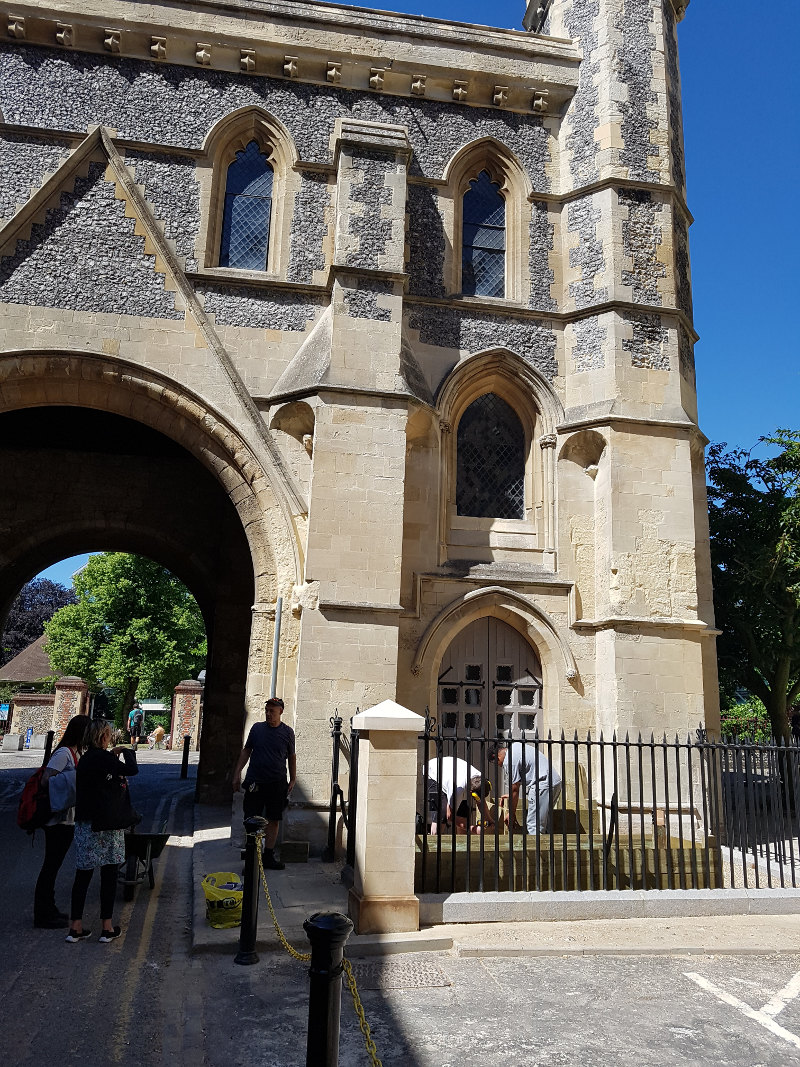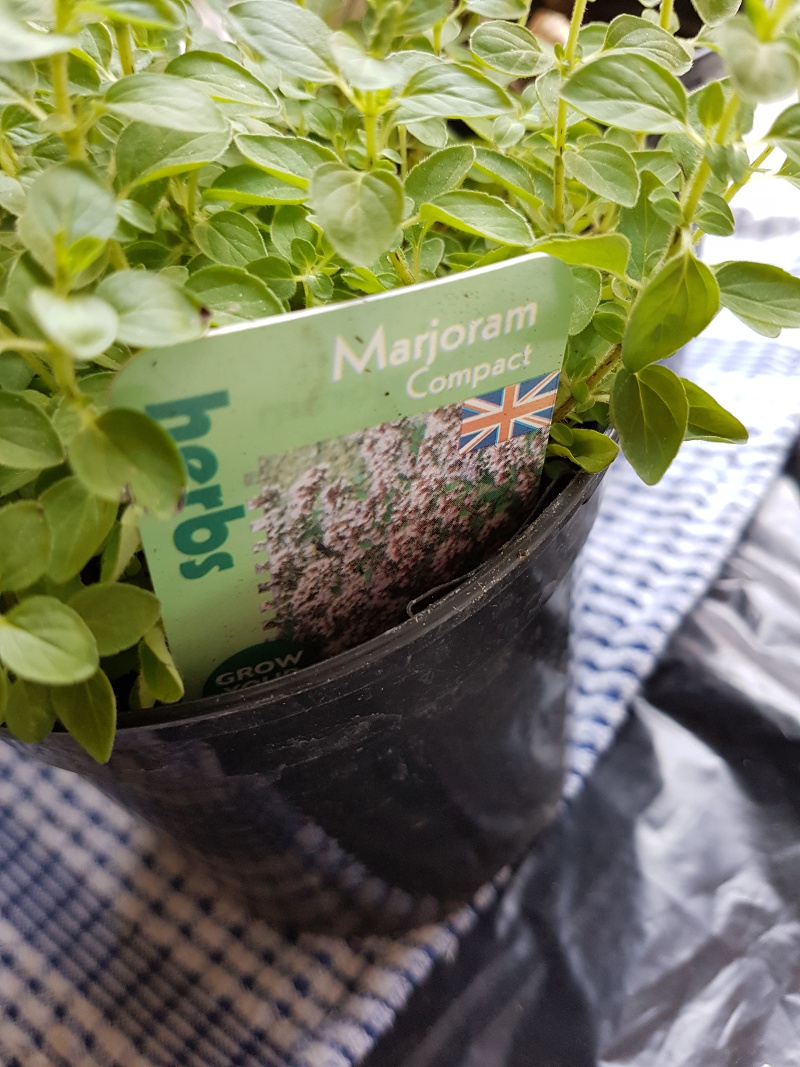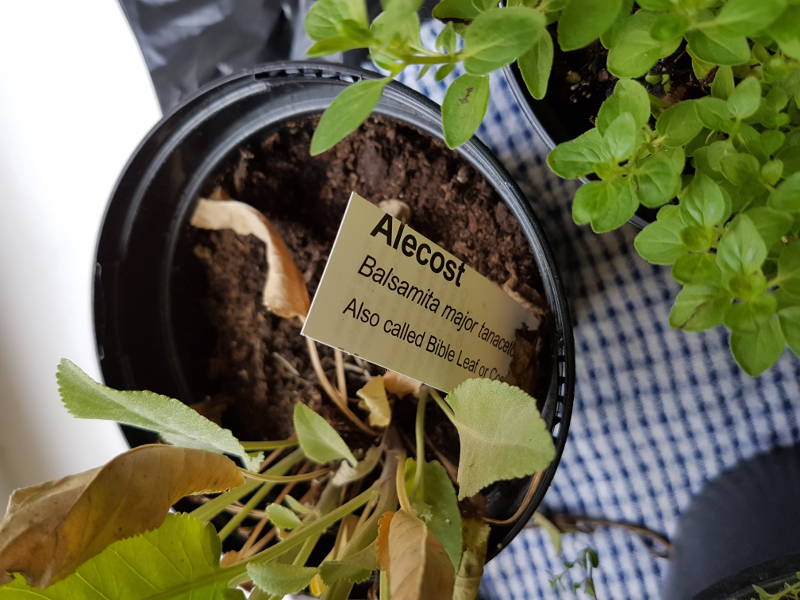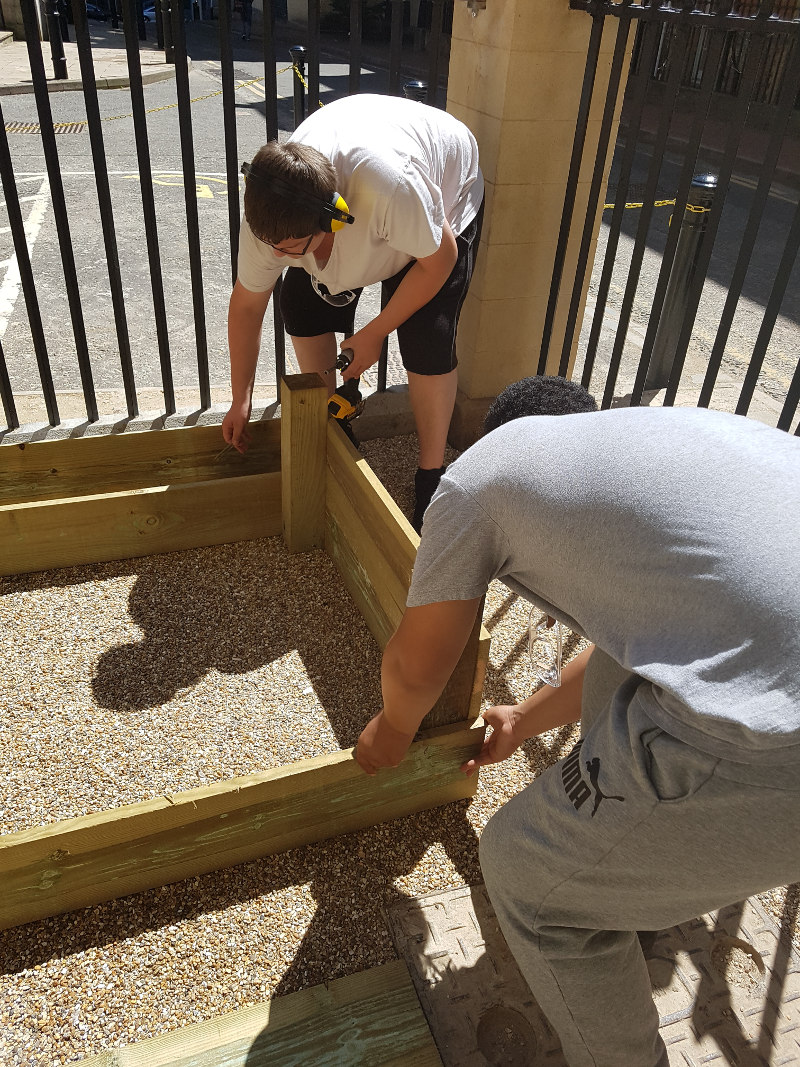As part of our project Reading Abbey Revealed, we are bringing history to life by making a medieval herb garden at the recently restored Abbey Gateway next to the Forbury Gardens.

Abbey Gateway showing the location of the new medieval garden
Medieval Herb Gardens
During the medieval period, monks at Reading Abbey grew herb gardens (most likely in the cloisters) as well as orchards. Crops for food were grown in the fields surrounding the abbey. Monks used the herbs for medicine and to flavour food. They also used them for their anti-septic properties and their fragrance. Straw was often laid down in walkways with lavender to keep the ground relatively clean and pleasant to travel across. It would, hopefully, keep flies and other unpleasant insects away from the abbey walkways and halls.
Phoenix College and RISC are working with us to develop a traditional medieval garden with herbs that monks in the abbey would have used for their culinary and medicinal properties.

Sawing Wood
Building the Troughs
The students from Phoenix College got straight to work when they arrived. Even in the hot sun they got on with cutting wood and building our troughs that will house the plants. This is particularly exciting because their garden will grow outside of the Abbey Gateway for years to come and become part of our schools sessions. They are contributing to the visual and sensory impression of the Abbey Gateway. Right now the garden is small but soon once the herbs have taken root, we will have an abundant green garden.
Herbs in our Garden
We have lavender, marjoram, sage and a bay tree, to name a few. These are strong plants that like to grow in rough soil! Right now, they are living in the Gateway wistfully looking out the window, waiting to be planted outside.

Sage
Sage was a well-regarded herb used to cure or prevent a wide and varying range of diseases. It forms part of a ‘four-thieves vinegar’ recipe which was thought to ward off the plague but it was also used a ‘tonic’ to quicken the senses, as part of a tooth paste, to sooth stings and to ‘reduce fevers’. Very much a high-flyer in the medicinal herb world!

Marjoram
Marjoram was often used in cooking because of its light flavour but also to spice wine and brew beer. Then after all that drinking, it would ‘comfort’ the stomach.

Alecost
Alecost or Costmary was used for women’s stomach ailments, in particular, but also to guard against general melancholy and hysteria. In regards to helping stomach issues, Alecost was classed as a laxative but it was also used to cure dysentery.
Some of the things that herbs were used for were, at times, contradictory and counter intuitive but these were times of exploration and experimentation.
We still use many herbs today in many different ways such as pot puri or a mint plant in the window sill to keep out bugs or chamomile tea as we go to bed. They are hardy plants that grow well and make a great addition to any garden so I would certainly recommend adding them to your own garden or taking the opportunity to come and have a look at ours.

Building the trough
Next Steps
So far the garden has our wooden troughs looking fantastic in the court yard just in front of the Gateway, especially (current) beautiful weather. The boys from Phoenix College have done a fantastic job and we can’t wait to see the gardens completed. We hope they are looking forward to it as much as we are!

Work done for the day!
Coming Soon
The coming weeks will be very exciting as we prepare the soil and actually plant the herbs. Look out for coming garden updates!
We will also be creating resources to support the use if the garden for school sessions so keep an eye out for changes under Schools on our website.
RISC – Understanding Islam
As part of their Understanding Islam Project, RISC have contributed knowledge, time and resources to help us create a garden.





